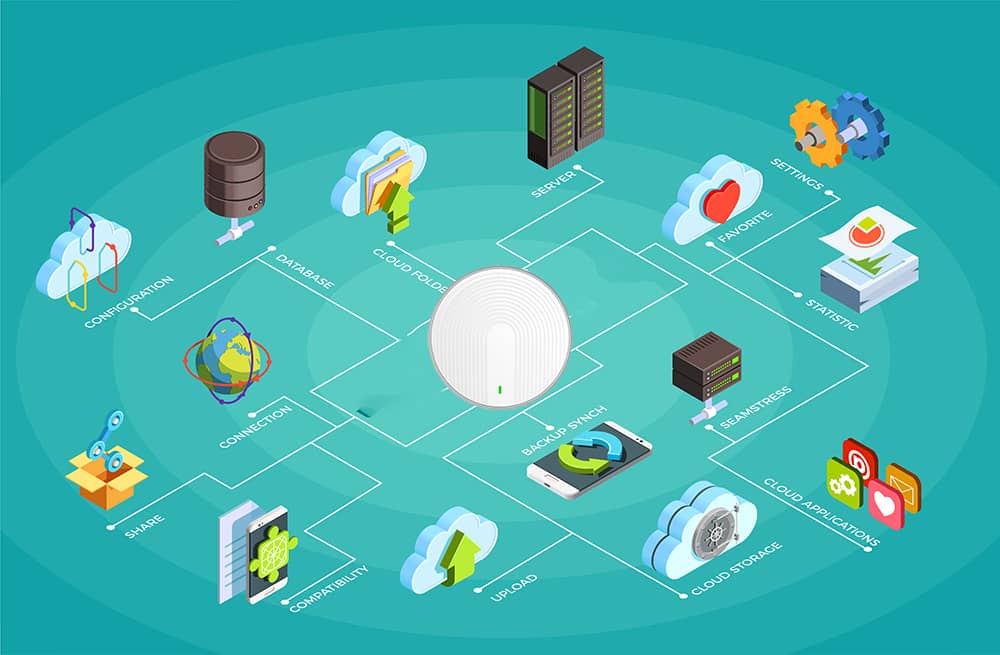Please submit your message online and we will contact you as soon as possible!
- Experience security and speed, without compromise.

2024-03-30
In a big wireless network, wireless access point are the most important pieces that enables stable connections for different gadgets. wireless access point which act as a central transmission point, allow devices to connect with the network, as well as, talk to each other. Their function of connectivity is crucial because they serve as intermediaries between wireless devices and the wire-based network infrastructure. Through the implementation of such protocols, the successful information transmission becomes a reality.
In big networks, a wireless access point is a pivotal place that cannot be neglected. They perform an essential role by helping to reach every corner of the network and maintain the network's sustainability. If located in the right place, through the usage of wireless access point, organizations can build a robust network which would be capable of supporting a great number of people in wide areas. This wide coverage not only builds better user experience but, also, provides uninterrupted communication and exhaustive data transfer across the network.

Strategical positioning of wireless access point in a big-scale wireless network is fundamental in affording not only the best coverage but also the maximum reach of signals.
Access point should be located within the common areas of the place but at a safe distance from the obstacles. The proper positioning of this wireless access point will maximize the covered area and give equal strength to the whole network to its extent. By doing so, organizations can successfully prevent from pocket zones forming by providing excellent connection quality throughout the areal expansion.
One more key step in the process of strategically placing access point includes an elaborated planning of the building ground plan and the user population in the network space. The grasp of the space dynamics and population distribution helps the administrators to determine how the network can achieve optimal performance. Strategically placing wireless access point close to building limits and offered density needs, organizations can reduce the connectivity issues and ensure network access everywhere.

When building a huge-sized wireless network, network capacity planning is a key factor that has a direct effect on the network's performance in terms of dexterity to support a high number of users and huge data demand. This factor implies two critical aspects that will facilitate to avail the network with a prospect of efficiency and scalability.
For the network capacity planning to be very successful, it is essential to obtain the flow rate of the users and the demand of data within the network system. Through meticulously performing evaluations on the level of users traffics and data repairs companies can get knowledge about degree of bandwidth which is able to provide smooth connectivity and data transmitting. Keeping the capacity of the network on a sufficient level must be a goal since otherwise traffic congestion and other problems connected with latency would occur and the user experience would not be best.

Also, alongside a current growth anticipation, a network capacity planning must include future requirements. As businesses grow markets are becoming bigger and more intricate. This drives a necessity of making network access match this growth. To fulfil the demand in this manner, we have to think through of installing the infrastructures together with the systems that need not to be compromised by the ever changing demands. Must be able to adapt to growing demands—think forward and adapt to trends such as growth in user behavior, multiplication of devices, and dramatic increases in the amount of data used.

In the world of informational giants, it is of paramount important to establish trustworthy security mechanisms in order to protect the confidential of data and preserving the integrity of the network infrastructure. Stringent encryption protocols development and making comprehensive security frameworks form the two fundamental pillars justifying why the network security against potential threats is important.
The application and use of ciphering technologies is what forms a solid base in the security of this wireless communications network. Utilization of best-in-class cryptographic algorithms and execution approaches assures data and user privacy from unauthorized access, and their intrusion. Unlike most of the other security architectures encryption algorithms not only come up with securing the data transmission but also help in keeping the network protected against the intrusion and thereby providing more comprehensive protection.
With the goal of providing maximum data protection and ensuring users’privacy stand up within wireless network ecosystem, strong encryption policies should be adopted. Encryption give a network security, as confidential details remain protected from tampering and unlicensed use. This advocative approach not only evokes users' confidence while they are operating with their data but it does also align to the prescribed data protection standards governing governance regulations.
Furthermore, diligent exploitation of strong encryption practices, cutting edge update provision and awareness-raised risk monitoring make the due base for a secure wireless network operation. Consistent exploitation of security vulnerabilities, together with up-to-date software patches and updates, is necessary in order to prevent any gaps that may be abused by persons having malicious intents in attempt to ensure integrity of network.
Sustained close watching is the main idea behind the detection and nullification of the points to entry that was unauthorized to the wireless network. Through employing leading-edge detection intrusion systems and real-time monitoring tools, businesses are able to be actively involve those activities that might be uncommon or unauthorized attempts that try to get past the network security shield. However, prevention stays ahead in the battle against attacks that might otherwise go unnoticed or rise and take over systems when more proactive measures are put in place.

In the realm of large-scale wireless networks, environmental factors and potential sources of interference play a significant role in shaping the network's performance and reliability. Understanding and addressing these considerations are essential to ensure consistent connectivity and optimal signal quality.
When deploying wireless access point in a large-scale wireless network, it is imperative to identify factors that could potentially interfere with the transmission of wireless signals. Common sources of interference include electronic devices, physical obstructions, and radio frequency (RF) interference from external sources. By conducting thorough assessments of the surrounding environment, network administrators can pinpoint these factors and take proactive measures to mitigate their impact on signal quality.
Mitigating the impact of interference on signal quality involves implementing strategic measures to minimize disruptions caused by environmental factors. This may include optimizing the placement of wireless access point to reduce signal overlap, utilizing shielding materials to block external interference, and employing frequency management techniques to mitigate the effects of RF interference. By proactively addressing potential sources of interference, organizations can uphold consistent signal quality and enhance overall network performance.
Ensuring consistent network performance amidst physical and environmental challenges necessitates the deployment of resilient infrastructure and adaptive technologies. This may involve utilizing advanced antenna designs capable of mitigating multipath propagation effects, implementing dynamic channel selection algorithms to avoid congested frequencies, and incorporating environmental monitoring systems to detect changes in signal propagation conditions. By adapting to these challenges, organizations can uphold consistent network performance across diverse operational environments.
Please submit your message online and we will contact you as soon as possible!